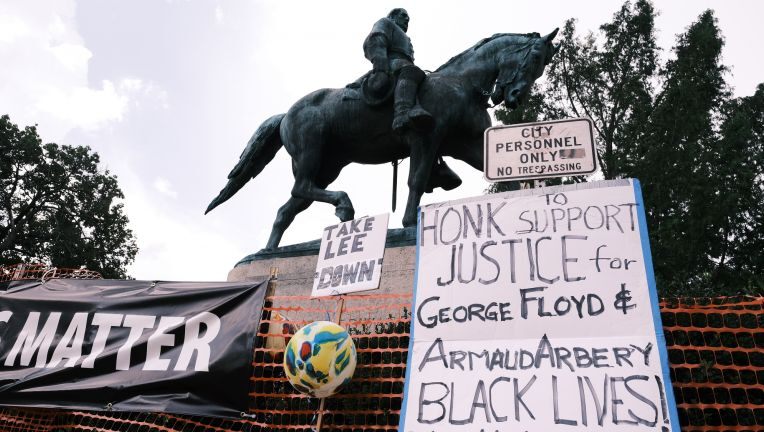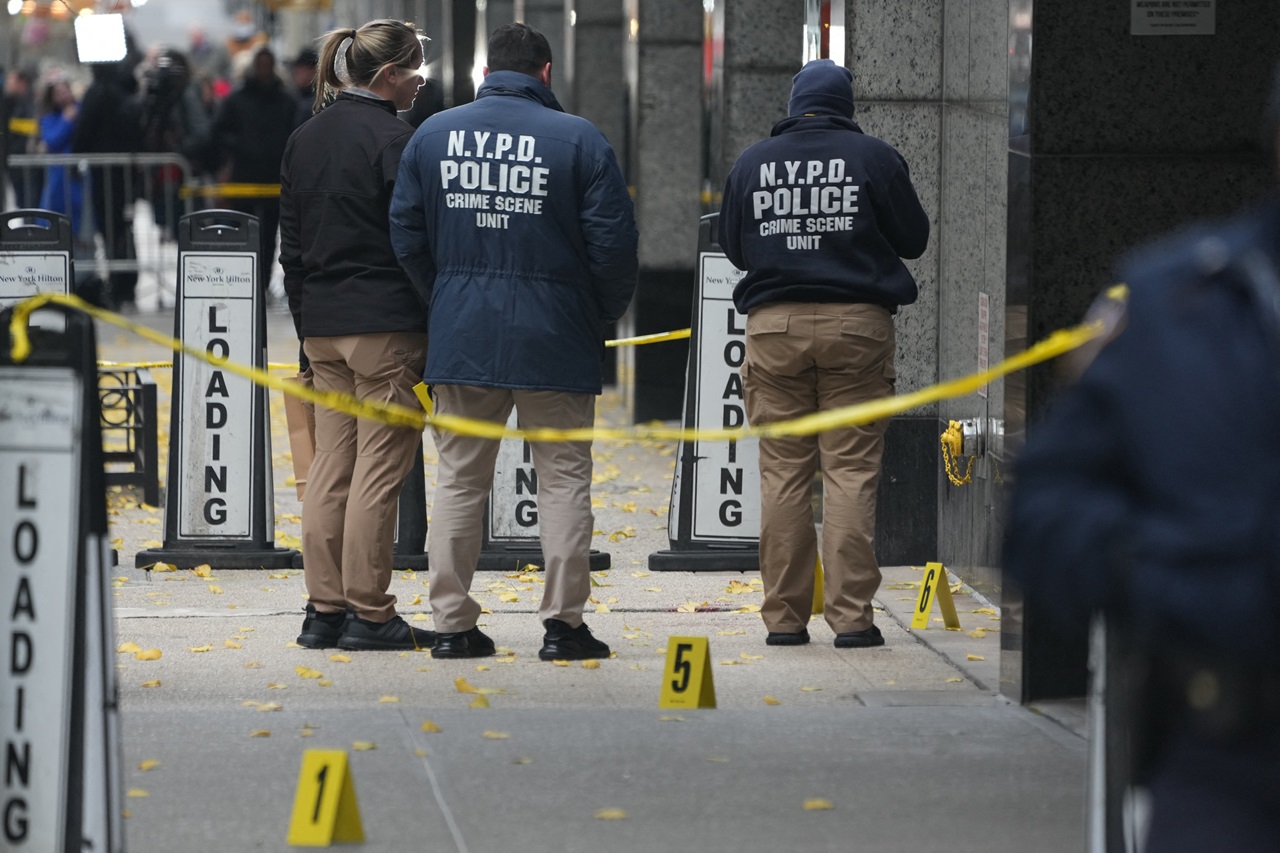
The Virginia Supreme Court rules on the right side of history regarding Confederate statues
The two statues in Charlottesville of Confederate generals have long stood as offensive tributes to the country’s long history of slavery and racism.
On Thursday, April 1, the Virginia Supreme Court ruled that Charlottesville can remove two statues of Confederate generals, which civil rights advocates claim to be an offensive tribute to America’s long history of slavery and racism.
In February 2021, the nation’s largest online racial justice organization, Color of Change, launched The Pedestal Project.
The Pedestal Project is an augmented reality experience on Instagram that allows users to place statues of modern racial justice leaders atop of empty pedestals where Confederate statues once stood.
The project launched with three remarkable leaders, the late John Lewis, Alicia Garza, and Chelsea Miller. Users can virtually place them on top of empty pedestals in which well-known soldiers once stood, such as Robert E. Lee and Stonewall Jackson.
The statues at the focal point of the Supreme Court case depict these soldiers — Gens. Robert E. Lee and Thomas J. Stonewall Jackson. The parks that hold these statues were the sites of impassioned demonstrations against police brutality last summer.
In August 2017, the Robert E. Lee statue was at the center of a violent white nationalist “Unite the Right” rally that resulted in the death of one woman, named Heather Heyer.
The white nationalists demonstrators marched through the streets of University of Virginia’s campus at night, carrying torches, sporting common far-right dress codes and chanting phrases such as “Jews will not replace us.”
The next morning, there was a massive clash between far-right attendees, who assembled near the Robert E. Lee statue, and counter-protesters.
Later in the day, a neo-Nazi drove a car into a crowd of counter-protesters in another part of town, killing Heyer.
Remember and honor Heather Heyer. https://t.co/lSSn2NyfRT
— Jonathan Wilson (@jnthnwwlsn) April 1, 2021
At the time, former President Donald Trump added fuel to the fire by refusing to condemn white supremacy, blaming all protesters involved for the violence that took place.
He also asserted that there were “very fine people on both sides.”
During his campaign, President Biden said that he was partially motivated to run because of Trump’s failure to unequivocally condemn the far right in the 2017 Charlottesville rally.
Not long after the “Unite the Right” rally, Charlottesville’s City Council approved resolutions to remove the statues, but local residents filed a complaint, insisting that the removal was illegal.
A circuit court had barred the removal of any Confederate monuments, citing a 1997 Virginia law that prevented the toppling of memorials and statues.
RELATED CONTENT
In Thursday’s decision, State Supreme Court Justice Bernard Goodwyn explained his ruling in simple terms. He said that both statues were erected long before the 1997 state law.
Goodwyn said that that law only applies to monuments erected after 1997.
The VA Supreme Court just handed down its opinion ruling that Charlottesville's Lee and Jackson statues were never subject to the previous state ban on removal, and has reversed every one of the circuit court's orders. After years of litigation, the statues can come down. pic.twitter.com/9jdodyfWRR
— Rich Schragger (@RichSchragger) April 1, 2021
The law “did not provide the authority for the city to erect the Statues, and it does not prohibit the City from disturbing or interfering with them,” Goodwyn wrote.
The State Supreme Court also affirmed the 2017 opinion of Attorney General Mark Herring, who maintained that this law “does not apply to any monument or memorial erected on any property within an independent city prior to 1997.”
“I have worked hard to help remove poisonous Confederate propaganda from our publicly-owned spaces, because I believe it glorifies a false history and sends a dangerous and divisive message about who we are and what we value,” Herring said.
In a statement on Thursday, the Charlottesville City Council applauded the decision, writing that it has every intention to redesign its parks in a way that centers healing and “tells a more complete history” of the city.
Charlottesville Wins Favorable Ruling from Virginia Supreme Court on Statues.
— Charlottesville City (@CvilleCityHall) April 1, 2021
Link to Press Release: https://t.co/CctM7dTcRr pic.twitter.com/O67WDo2YUq
Charlottesville City Manager Chip Boyles said that the case is of major significance for the city and for the rest of the Commonwealth, and praised the work of Acting City Attorney Lisa Robertson.
“She has labored extensively over the past four years and I am thrilled she has won all of us this victory in the highest court in Virginia,” Boyles said.
Nikuyah Walker, mayor of Charlottesville, commended the court ruling as well and the community members who have been pushing for the statue’s removal.
She applauded their “steadfastness and perseverance over the past five years.”
“For all of us, who were on the right side of history. Bravo!” said Walker.











LEAVE A COMMENT:
Join the discussion! Leave a comment.